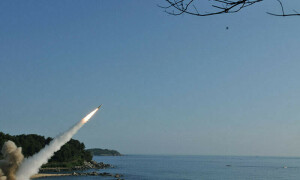When there is nothing else to eat in the house, there is always Qima (also commonly spelled Keema, Qeema); an assumption I have lived by as a child. Hence, qima alloo (mincemeat and potatoes) with a side of boiled white rice became my favourite food of choice (and convenience).
The masala-flavoured alloo and depth of the mincemeat is a delectable combination, a common favourite in sub-continental households. Qima, on its own, or with a side of vegetables is a favouite street food also, and is popularly found in the menus of street dhabas and snack bars across Pakistan.
Lizzie Cunningham in her book titled, Curry says;
The meat dishes relied heavily on Qima (minced meat), a favorite ingredient among Persian cooks. Mincing meat was a good way of dealing with it in hot countries when it tended to be tough because it had to be cooked soon after the animal was slaughtered. The Muslim roots of many of the dishes can be seen in their heavy handedness with onions and garlic.
The cooks of yesteryears discovered an effortless way to cook meat dishes, for variety, tenderness, and a melt in the mouth texture of the meat; they pounded meat and made kababs, kofta and qima with it.
The best qima and kebabs were made by the nanbais (bazaar cooks) of Lucknow. Large Muslim families where parents, several sons, and their wives and children all resided together in a joint family system were too big to cater for in one kitchen. As a result, a few dishes were made at home and the rest were ordered from the trusted bazaar cooks known as nanbais.
 |
Cunningham further adds,
Each nanbai specialised in a particular dish and the streets of Lucknow were lined with shops where the cooks could be seen basting keebuabs over a charcoal fire on the ground with one hand, and the beating of flies with the other, and the cauldrons of curry, pillau, and platters of qima, were made to forward as delicacies at the appointed hour to some great assembly at noble households.
Kofta and kebabs were made out of finely minced and pounded meat known as Qima. While westerners tend to mince meat as a way of using inferior grades, the Mughals would often mince the best cuts. Qima is frequently referred to the recipes given by Akbar’s courtier, Abul Fazl, as an ingredient for pilaus. The Mughals liked minced beef but in Lucknow, the cooks preferred lamb, which produced a softer mince.
 |
They would grind the meat into a fine paste and then add ginger garlic, poppy seeds, and various combinations of spices. Rolled into balls or lozenges, spear them onto a skewer, and roast them over fire, and at times just leave them as a platter of cooked Qima.
The Qalyah Recipe (modern day Qima) as chronicled by Abul Fzal in Ain-e-Akbari
Thick curry made with minced mutton, onions, peppers, ghee, cloves, cardamom, and salt.
10 seer meat
2 seer ghee
1 seer onions
2 dam pepper
1 dam each: cloves, cardamoms
1/8 seer salt
(1 seer equals 2 ½ lbs., 1 dam equals ¾ oz., 1 misqal equals 6.22 grams)
Qima is a real household favourite, and it can be made in a variety of ways, with or sans vegetables. Alloo qima, palak qima, meythee qima, Hyderabadi achari qima, matar qima, mirch qima, needless to say mincemeat (chicken, turkey, mutton or beef) can be made in as many ways as there are languages, cultures and ethnicities in the subcontinent.
When it was time for me to make qima, I decided upon the largely preferred qima alloo from my mother’s recipe. Here it is, from my kitchen to yours.
Ingredients
2 lbs (ground meat of choice)
3 to 4 medium-sized potatoes (chopped in 1 inch squares)
3 to 4 medium-sized tomatoes (chopped)
1 large onion (thinly sliced)
1 ½ tsp ginger
1 ½ tsp garlic
½ cup oil
½ to 1 tsp cumin seeds
1 to 2 tsp coriander powder
Salt to taste
Red chillie powder to taste
¼ to ½ tsp turmeric
1 tsp garam masala powder
 |
Note: if the mince is chicken or turkey increase the masala proportion to taste, since white meat requires extra masala for desired taste.
Garnish
2 to 3 tbsp lemon juice
2 to 3 green chillie
Fresh coriander
Method
In a pot put all the ingredients together (except for the oil) and cook on medium heat.
When the meat is half done, add potatoes. Once potatoes are almost done, add the oil and cook on high heat, until the oil separates and the potatoes are tender.
Add lemon juice and stir, sprinkle green chillie and coriander.
Enjoy with naan or boiled rice.
 |
Explore more food stories here.
—Photos by Fawad Ahmed








































